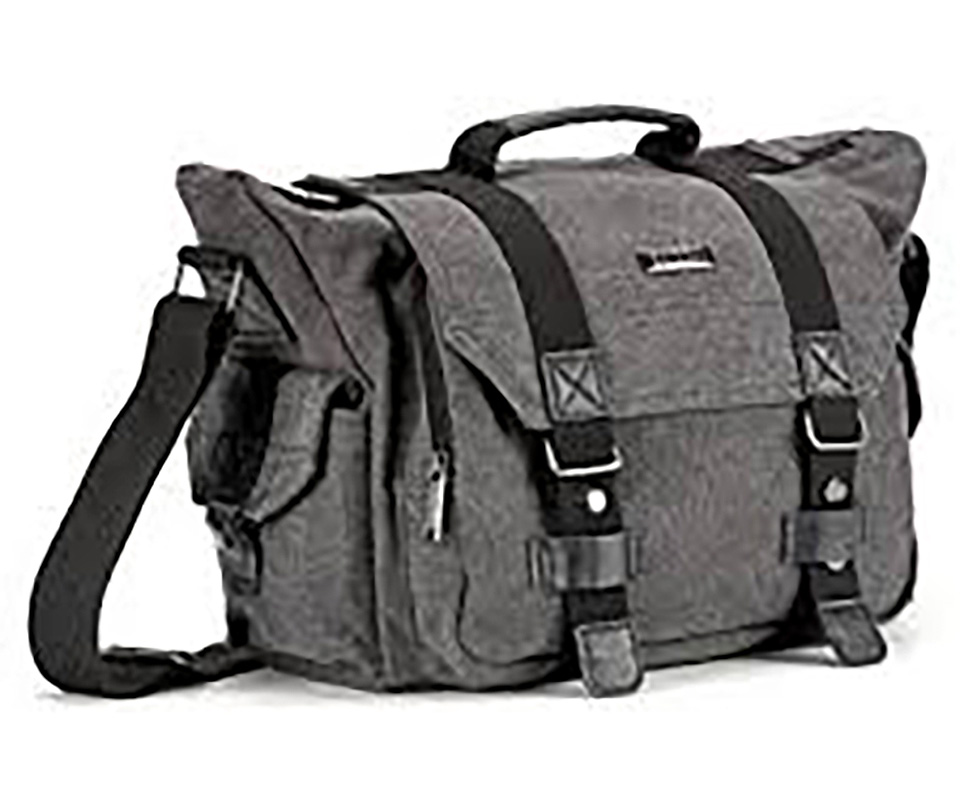
Do you have a camera bag? Sooner or later, if you are a photography enthusiast, you will want to expand upon your current equipment. Even when just starting out you should have an eye to the future, as money spent wisely now can result in great savings later.
Photo shops have many different types and designs for you to choose from, but what should you, as an enthusiastic amateur, carry around with you? The following is what I would consider to be a good collection which will stand you in good stead for many years, and allow you to photograph almost anything.
Firstly, (obviously) you need a good camera – an SLR (single lens reflex). The first pointer is to select a good brand. There are many to choose from, but if you look at the pros who are out every day shooting countless images, you will find the same names on the camera cases. When actively running my studio I used Nikon for 35 mm work – bulletproof and quality lenses. Others such as Canon, Pentax, Olympus, etc., are also excellent brands, all of which have interchangeable lenses too, so your basic system can be enlarged upon over a period of time, and your original lenses will still be good.
The SLR is the center of your equipment. It is this camera that will allow you to be creative in your shots. It is this camera that will win you awards and recognition. It will be expensive, so choose wisely. For my money, the ideal “starter” SLR would still be a Nikon but look to the top of the line.
Now you look at lenses. The “standard” lens that will come with your SLR will most likely be a 50 mm. Buy firstly a wide angle lens. Around 28 or 24 mm is good, or even 20 mm for very dramatic shots, but the distortion problem can be a little much at this wide angle. The next lens you should buy is around the focal length of 135 mm – the ideal lens for portraits.
No zooms? No, I personally do not like zoom lenses. The sharpness is not as good as “prime” lenses (though the manufacturers say they are much better these days), but even more importantly, zoom lenses make for lazy photographers. Instead of walking in to compose the subject, the photographer zooms in. The depth of field is lost, the flash is too far away and the chance of a perfect shot is lost. You don’t really need a zoom!
The next item is ‘insurance’. You should have a small point and shoot to use if you have a problem with the SLR (it does happen). Again, stick to the better brands if you want to get something which will last, and even more importantly, one that will return crisp images. Olympus makes some very good small point and shooters with excellent lenses. This camera is also for those situations where you don’t want to lug all the gear, when you need something light and pocket portable. Get one with a 24 or 28 mm lens and built in flash which can be turned off.
The next important piece of equipment is the bag you carry your equipment around in. My choice is the soft padded camera bag with adjustable divisions. Waterproof in tropical rainstorms is important, so get one that has the zip fastener covered by a lip of material. Some exterior pockets to carry batteries, a spare pair of fold-up reading glasses (if you need them) and a pocket torch. Again, get a good one. My bag is quite battered and worn, but is now over 20 years old and has been round the world several times. It was money well spent.
Other equipment includes filters, and I would refer you to previous articles on this subject – but do use adaptor rings to bring all the lenses to the same size. Again a cost saving later. And a good quality tripod, mentioned a couple of weeks ago.
Finally, have some spare batteries there is nothing worse than running out of power just when you have come across Angelina Jolie sun-baking incognito on Jomtien Beach.





